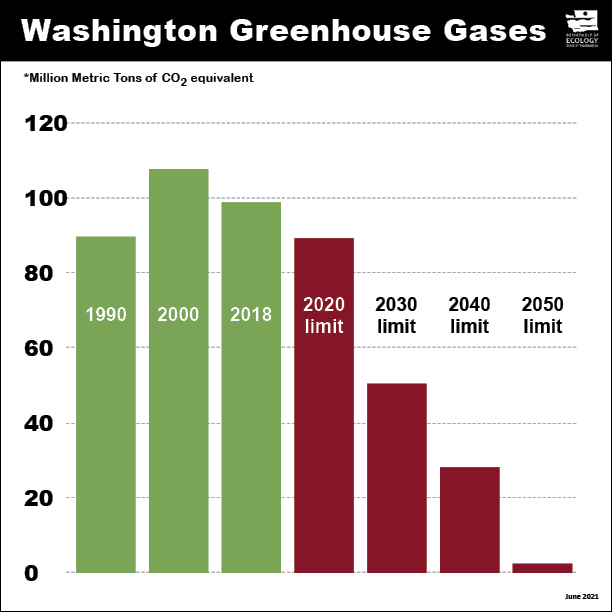This week, the Washington Department of Ecology launched its efforts to develop the program and regulations needed to implement the Climate Commitment Act, a new law Gov. Jay Inslee signed in May designed to reduce greenhouse gases from the state’s largest sources.
The Climate Commitment Act creates a “cap and invest” program, which sets a statewide cap on greenhouse gas emissions and then auctions or allocates emissions allowances to fuel suppliers, industrial sources, electricity generators and other large sources of emissions. Over time, the cap shrinks, pushing emitters to find ways to increase efficiency, improve processes, switch to non-emitting technologies, or support programs that reduce or capture carbon emissions. The law requires the new program to be in place by 2023.
The “invest” part of the program refers to proceeds from the auction of emissions allowances, which will support climate resiliency programs, such as flood mitigation, securing water supplies, and clean energy projects.
“The Climate Commitment Act may be the most important environmental legislation in our state in the past 50 years,” Gov. Inslee said. “It gives us a path to meet the emissions limits set in state law, and puts Washington on the forefront of the clean economy of the future.”
Washington is only the second state to pass an economy-wide carbon cap program, after California, but this approach to tackling greenhouse gases is used around the world. Thirty nations participate in the European Union emissions trading program, which has operated since 2005; and China started its own nationwide emissions cap and trade program earlier this year.
“This is a proven approach to cutting the greenhouse gas emissions that drive climate change,” said Laura Watson, Ecology’s director. “Washington’s future depends on us taking action today. Climate change threatens the health of our communities, the strength of our economy, and the environment and natural resources that make our state so special.”
The Climate Commitment Act has a number of features designed to protect and invest in communities that bear a disproportionate burden from pollution today, or that are at elevated risk from the effects of climate change. That includes dedicating at least 35% of investments made under the Climate Commitment Act toward these overburdened communities, and establishing a new air quality monitoring program in these areas.
Developing the Climate Commitment Act program
Ecology is conducting three related rulemakings to develop different aspects of the Climate Commitment Act program:
- Cap-and-invest program rules – This regulation sets up the structure for the emissions allowance auctions, allocating other allowances, and related requirements.
- Criteria for emissions-intensive, trade-exposed industries – The Climate Commitment Act has special rules for emissions-intensive industries like pulp and paper mills and refineries, providing incentives to invest in emissions reductions while also ensuring that these businesses can continue to operate in Washington. In this rulemaking, Ecology will establish criteria that define how new or existing businesses qualify as emissions-intensive, trade-exposed.
- Reporting emission of greenhouse gases – This rulemaking will update Washington’s existing greenhouse gas reporting program to align it with the requirements of the Climate Commitment Act.
Get involved with the CCA program development
As it develops this new program, Ecology will be seeking public input on the program’s design and operations. There will be both informal public workshops where people can learn more about the design of the program and formal hearings where the public can provide input on the proposed structure. Ecology will announce details on those meetings in the coming months.
You can stay up to date on Ecology’s progress, proposals, and public involvement opportunities by subscribing to the Climate Commitment Act email list.



